Proven Techniques to Unclog Your Drain Effectively
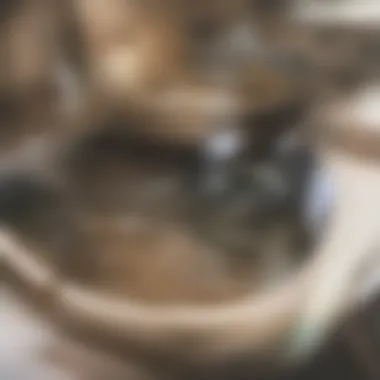

Intro
Clogged drains are a persistent problem that many households face. They can lead to unpleasant odors, unsanitary conditions, and interruptions in daily tasks. Understanding the nature of these blockages is essential for any homeowner or design enthusiast. This article will guide you through various strategies to effectively unclog your drain. We will explore simple household remedies, advanced tools, and preventive measures that can save you time and expenses.
Featured Homes
Spotlight on Unique Architectural Designs
While addressing clogged drains involves practical solutions, the design of a home can play a crucial role in preventing such issues. Homes with unique architectural features, such as intricate plumbing systems or unconventional layouts, require special care and attention. These designs can sometimes contribute to hidden issues that may cause drain blockages.
Some modern homes incorporate eco-friendly features, such as gray water systems. These systems utilize water from sinks or showers for irrigation, reducing the risk of drainage problems. However, understanding the specific plumbing layout and its maintenance is vital for avoiding clogs.
Home Tours: Inside Stunning Interiors
During home tours, many beautiful interiors may hide what seems like simple plumbing systems. However, these systems can tell stories of design and utility. Observing how different materials and layouts interact gives valuable insight into preventing drainage issues. Homeowners should take note of where the plumbing exits the structure and ensure that there are no obstructions.
Understanding Drain Blockages
Drain blockages can happen for various reasons. Common causes include:
- Hair buildup in bathroom sinks and shower drains
- Food scraps clogging kitchen sinks
- Grease accumulation in pipes
- Debris or foreign objects lodged in toilets
Each cause requires a different approach. By understanding what leads to blockages, homeowners can choose the best strategy for unclogging.
Selecting Appropriate Unclogging Methods
Household Remedies
Sometimes, simple home remedies can successfully unclog a drain. Some effective methods include:
- Baking Soda and Vinegar: Pouring half a cup of baking soda followed by half a cup of vinegar down the drain can create a chemical reaction that helps break down clogs. After 30 minutes, flush with hot water.
- Hot Water Flush: Boiling water is a natural way to dissolve grease and soap scum. For kitchen sinks, pouring boiling water directly can help dislodge minor clogs.
Advanced Techniques
For more stubborn clogs, you may need advanced techniques. These include using:
- Plumbers’ Snake: This tool can reach deep into the plumbing to remove clogs that are far down the line.
- Hydro Jetting: This method uses high-pressure water to clean the pipes thoroughly and remove any buildup.
The effectiveness of these advanced techniques may require consultation with a plumbing professional.
Preventive Measures
To maintain clear drains, consider some preventive steps:
- Regular Cleaning: Regularly clean your drains with a mixture of baking soda and vinegar.
- Install Screens: Screens can catch hair and debris in the bathroom and kitchen sinks, preventing clogs.
- Mind What Goes Down the Drain: Avoid putting grease, large food scraps, and other non-biodegradable items down the sink.
Regular maintenance and mindful usage of your drains can prevent clogs before they happen.
Finale
In summary, unclogging your drain can be straightforward with the right approach. By understanding the nature of clogs and employing various methods, you can ensure your drainage systems remain effective. Remember to consider the specific features of your home’s plumbing system and make use of both simple and advanced techniques. With regular maintenance and careful usage, you can enhance your living space, preventing unsightly issues in the future.
Understanding Drain Blockages
Understanding drain blockages is essential for homeowners and anyone seeking to maintain a functional and clean living space. Clogged drains are more than just an inconvenience; they can lead to unsanitary conditions and expensive repairs if not properly managed. Recognizing the dynamics of how and why drains clog can inform better practices and strategies for prevention. This section will delve into various aspects of drain blockage, equipping readers with the knowledge needed to tackle this common household issue.
Common Causes of Clogs
Drain blockages often stem from various everyday activities. One of the primary causes is the accumulation of hair in bathroom drains. This is particularly true in showers and sinks, where strands can easily gather over time, forming a tough blockage. Additionally, food particles can create significant issues in kitchen sinks, especially if a garbage disposal is not present or used improperly. Grease buildup is another notorious clog contributor, as it solidifies and collects debris, ultimately restricting flow.
Other common causes include:
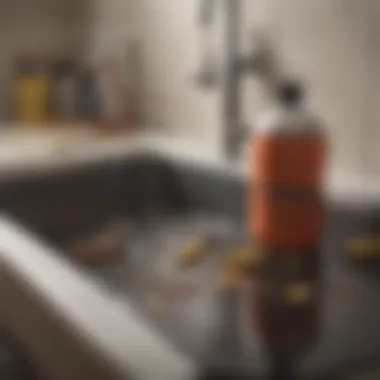
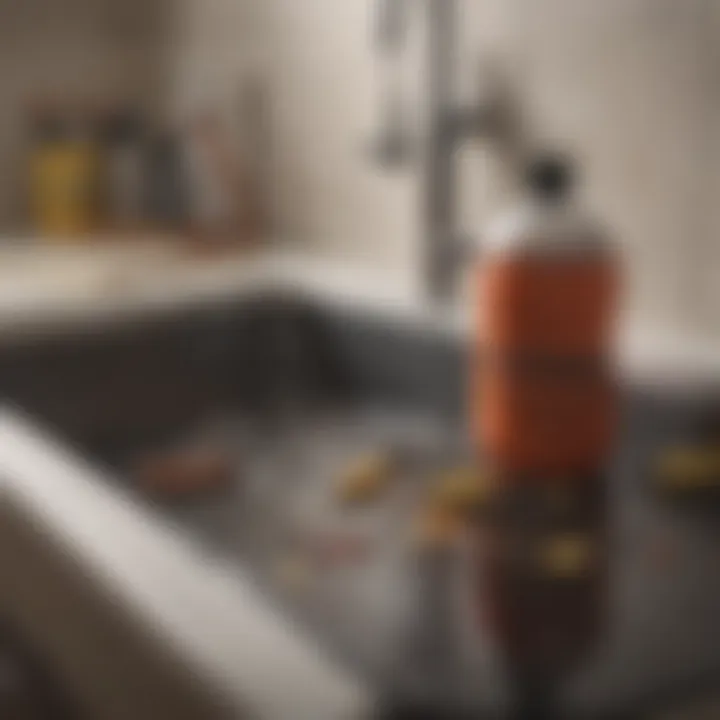
- Soap Scum: Residue from soaps and body washes can stick to the walls of pipes, combining with other debris.
- Tree Roots: In outdoor drains, invasive tree roots can penetrate cracks and blockages in older pipes.
- Foreign Objects: Small items like toy parts, pads, or wipes can accidentally slip down drains, leading to significant blockages.
Understanding these causes can help in taking proactive steps to minimize clogs. Routine maintenance and awareness can play an essential role in preventing such inconveniences.
Types of Drains Prone to Clogging
Certain types of drains are naturally more susceptible to blockages than others. Knowing which drains are at risk allows homeowners to apply more focused preventive measures.
- Kitchen Drains: These are often the most impacted, primarily due to food waste and grease. The design of kitchen sinks can lead to accumulation if proper measures are not taken.
- Bathroom Drains: Showers and bathtubs can quickly become clogged due to hair loss and soap scum formations.
- Laundry Drains: Lint and fabric fibers from clothing can build up in these drains, hindering water flow.
- Outdoor Drains: Known for being affected by leaves and debris, outdoor drains can easily become blocked, especially during autumn.
Recognizing these drain types and their vulnerabilities can inform strategies to keep them clear and functioning effectively.
Signs Your Drain is Clogged
Being vigilant about early signs of a clogged drain can save time and effort in the long run. Many individuals may ignore subtle indicators; however, early detection is crucial.
Common signs of a clog include:
- Slow Drainage: If water takes longer than usual to drain, it may be a sign of impending blockage.
- Unpleasant Odors: A foul smell coming from drains is often a precursor to a clog, originating from decaying matter trapped inside.
- Gurgling Sounds: Unusual sounds from the drains, such as gurgling or bubbling, can indicate trapped air or liquid attempting to pass through a blockage.
- Backflow: Water or waste backing up into sinks or tubs is a clear and immediate sign of a serious clog needing urgent attention.
By recognizing these signs early, homeowners can take appropriate action, potentially avoiding more significant issues down the line.
Initial Assessment of the Clog
Understanding the state of your drain is crucial before taking any further steps. The initial assessment plays a vital role in successfully addressing the blockage. This process allows individuals to pinpoint the location and extent of the clog, which can drastically influence the approach to solving the issue.
By conducting a thorough initial assessment, you can determine whether a DIY solution will suffice or if professional help is necessary. This consideration can save time, effort, and money. Lack of proper assessment might lead to ineffective solutions, prolonged frustration, and even more severe plumbing issues down the line. Thus, equip yourself with knowledge before diving into remedies.
Locating the Blockage
The first step is to locate where the blockage is occurring. Clogs can happen in various places, including sinks, toilets, and drains that lead to your main sewer line. Observational skills are important here. You should start by noting the affected area. Water pooling in the sink or tub suggests blockage in a nearby drain.
Take a moment to inspect each fixture. If multiple drains are slow to drain, it may indicate a larger issue in the main line. Always consider the possibility of different clogs in different fixtures. Tools like a flashlight or a mirror can help with visibility in hard-to-see areas.
If signs of backup arise, such as gurgling noises or foul smells, they can often point to the location of the problem. Being systematic in this approach will help guide you to the source of the issue more effectively.
Determining the Severity of the Clog
Once the blockage is located, the next step involves assessing how severe it is. There are a few indicators to gauge this severity. Ask yourself:
- How long has the clog been present?
- Is water draining at all, or is it completely blocked?
- Are there any unusual odors coming from the drain?
- Do other fixtures exhibit signs of drainage issues?
If water is pooling and draining extremely slowly, it might indicate a partial blockage. Conversely, a complete stop in drainage points to a more severe clog.
For further evaluation, you might consider flushing the drain with water or using a visual inspection through the access points if available. Keep in mind that a severe blockage can lead to plumbing damage and potential overflow, making early assessment essential for timely action.
Home Remedies for Clogged Drains
Home remedies for clogged drains can provide a practical and often cost-effective solutions to a common household problem. These methods generally involve ingredients that are easily accessible and safe for your plumbing system. Understanding these techniques is important as they not only address the immediate issue, but can also help in preventing future clogs. Often, the use of natural remedies can minimize reliance on harsh chemicals which can sometimes damage pipes or pose health risks.
Baking Soda and Vinegar Method
The baking soda and vinegar method is a popular choice for unclogging various types of drains. This method works on the principle of a chemical reaction. When baking soda is combined with vinegar, they create a fizzing action that helps to dislodge debris and buildup within the pipes.
- Start by pouring half a cup of baking soda down the drain.
- Follow it with half a cup of vinegar.
- Let the mixture sit for about 15 to 30 minutes. You may hear fizzing sounds indicating the reaction is taking place.
- After waiting, flush the drain with hot water.
This approach not only cleans out clogs, but it also freshens the drain. It is important to note that repeated use of this method can aid in preventing future clogs from forming.
Boiling Water Technique
The boiling water technique is extremely simple and useful for greasy buildup. Hot water can dissolve and help break down many types of blockages in the pipes. To use this method:


- Bring a kettle of water to a boil.
- Carefully pour the boiling water directly into the clogged drain in a steady stream.
- Repeat the process if necessary, allowing it to work for a few minutes between pours.
This method is especially effective for kitchen drains where grease often accumulates. Caution is needed, of course, to ensure hot water is used safely, so avoid splashing.
Dish Soap and Hot Water
Using dish soap combined with hot water is another effective technique for unclogging drains. Dish soap helps to break down grease, making it easier for hot water to flush it away. The steps are as follows:
- Squeeze a generous amount of dish soap directly into the drain.
- Follow with a pot of hot water, ensuring it flows down the drain slowly.
- Let it sit for a few minutes, allowing the soap to penetrate the blockage.
- Finally, flush with more hot water.
This method can be especially beneficial for kitchen sinks, where food particles and grease are frequent clog contributors.
Home remedies not only tackle the problem at hand, but also contribute to the overall maintenance of the drainage systems.
Through these home remedies, homeowners can effectively address clogged drains without resorting to expensive or potentially harmful chemical solutions. Regular use of these methods can maintain clear drainage and prevent future issues.
Mechanical Methods to Unclog Drains
Mechanical methods for unclogging drains involve physical tools and techniques that directly interact with the blockage. These strategies are essential as they often provide immediate relief from clogs without relying on substances that may be harmful or damaging to plumbing systems. Employing mechanical techniques is generally safe and can address issues ranging from minor to severe blockages. The selection of a particular method depends on the nature of the clog and the tools available.
Using a Plunger
The plunger is one of the most fundamental and accessible tools for clearing drain obstructions. It consists of a rubber suction cup on a wooden or plastic handle. To effectively use a plunger, position the cup over the drain and create a tight seal. Apply a series of vigorous up-and-down motions. This action generates suction that can dislodge the blockage. It is particularly effective for minor clogs in toilets, sinks, and bathtubs.
- Considerations: Ensure that the plunger is appropriate for the specific drain type. A toilet plunger has a flange, which is more effective for toilets than a standard sink plunger.
- Tips: If you encounter persistent resistance while plunging, it may indicate a deeper blockage requiring alternative methods. Always clean the plunger after use to avoid cross-contamination between different drains.
Employing a Drain Snake
The drain snake, or auger, is a tool designed specifically for clearing tougher clogs that a plunger cannot address. It consists of a long, flexible steel wire with a coiled end that can navigate through pipes, reaching further into the plumbing system. To use a drain snake, insert the coiled end into the clogged drain and turn the handle to push it deeper. This mechanism allows the snake to break up or snag the obstruction.
- Benefits: A drain snake is versatile and can handle a variety of clogs, from hair and grease to more stubborn blockages.
- Considerations: Proper technique is crucial. Avoid forcing the snake too aggressively as this can cause damage to pipes, especially older ones.
Wet/Dry Vacuum Techniques
A wet/dry vacuum is another effective mechanical method for unclogging drains. This tool is capable of removing both liquids and solids, making it ideal for various situations. Place the vacuum nozzle over the drain and create a tight seal. Then turn on the vacuum to suck out any debris or standing water. This technique is particularly useful for larger clogs that involve debris accumulation.
- Considerations: Ensure that the vacuum is designed for wet applications and is thoroughly cleaned after use. Proper maintenance extends the tool's life and ensures optimal performance.
- Tips: If the clog is located in a difficult-to-reach area of the drain, use an extension hose to improve access and efficiency.
In summary, mechanical methods offer effective ways to address drain issues without resorting to chemical solutions, preserving the integrity of your plumbing.
Chemical Solutions for Drain Clogs
Clogged drains can be persistent nuisances that require thorough attention. While home remedies are common, there are times when chemical solutions can offer faster and more effective results. This section will discuss commercial drain cleaners, when it is appropriate to use chemical solutions, and essential safety precautions to be aware of when handling these products.
Commercial Drain Cleaners
Commercial drain cleaners are formulated specifically to break down clogs caused by various substances. They often contain strong chemicals such as sodium hydroxide or sulfuric acid that help dissolve organic material such as hair, grease, and soap scum. Here are some important points regarding commercial drain cleaners:
- Effectiveness: Many of these products can quickly restore flow, especially in less severe clogs.
- Types: There are caustic, acid-based, and enzymatic cleaners available. Caustic cleaners are common and effective against grease, while enzymatic cleaners are safer options that break down organic matter through biological processes.
- Accessibility: Most are readily available at hardware stores or supermarkets, making them a convenient choice for homeowners.
However, it is vital to consider that strong chemical cleaners can sometimes damage pipes, particularly older ones, or when used excessively. Users should read the labels carefully before purchase.
When to Use Chemical Solutions
Determining the right time to resort to chemical solutions can save time and potential frustration. Here are some guidelines:
- Severity of Clog: If initial remedies such as boiling water or a plunger fail, chemical solutions may be necessary.
- Type of Clog: Clogs caused by organic materials like hair or food can more effectively be addressed with chemical solutions than those caused primarily by non-organic materials.
- Time Sensitivity: When immediate drain clearance is needed and other methods take longer, a chemical solution offers a quicker fix.
These solutions should not be seen as the primary choice for every clog, but as an assisting method when simpler solutions are inadequate.
Safety Precautions
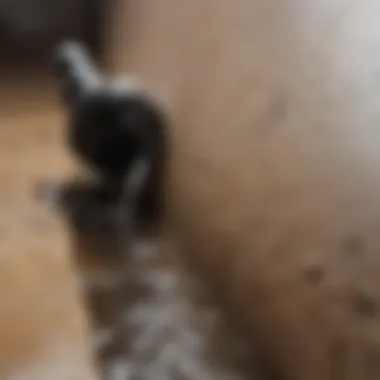
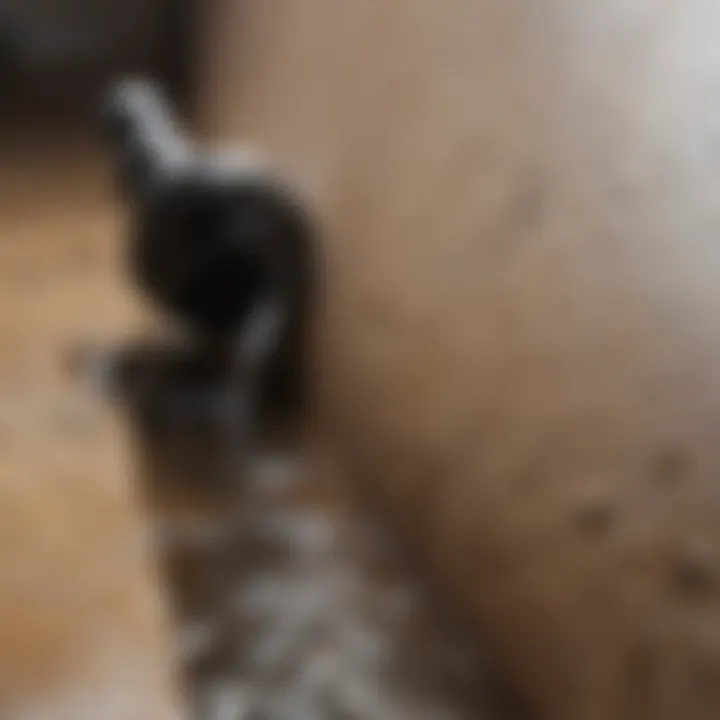
Handling chemical drain cleaners requires respect for the potential hazards involved. Adhering to safety precautions can help prevent accidents and injuries:
- Read Labels Thoroughly: Always review the packaging for specific instructions and warnings.
- Protective Gear: Wear gloves and goggles to protect skin and eyes when using chemical cleaners. This is especially crucial since spills can occur.
- Ventilation is Key: Ensure good airflow in the area. Fumes from chemical cleaners can be toxic.
- Avoid Mixing Chemicals: Combining different cleaners can produce harmful reactions. Stick to one product at a time.
- Follow Disposal Instructions: After using any chemical, dispose of the container as recommended to prevent environmental harm.
Always prioritize your safety and that of others when using powerful chemical cleaners.
By following these guidelines and understanding the role of chemical solutions, homeowners can effectively manage clogged drains while minimizing risks associated with chemical use. This comprehensive approach empowers individuals with the knowledge needed for successful drain management.
Preventive Measures for Drain Maintenance
Maintaining the functionality of your drains is essential for a smooth-running household. Preventive measures can significantly reduce the likelihood of clogs and costly plumbing issues. Regular maintenance not only extends the life of your plumbing system but also enhances the overall hygiene of your living space. By incorporating specific cleaning practices and preventive tools, homeowners can mitigate potential problems before they escalate.
Regular Cleaning Practices
Engaging in regular cleaning of your drains is a proactive strategy that can prevent blockages. Establish a cleaning routine that addresses common buildup in your sinks and showers. Here are some effective practices:
- Flushing with Hot Water: Regularly pour boiling water down the drains to help break up grease and soap residues. This simple method can help keep your pipes clear.
- Monthly Baking Soda Treatment: Pour one cup of baking soda followed by one cup of vinegar down the drain. This natural solution helps to dissolve organic matter that can cause clogs. The fizzing reaction promotes cleansing of the pipes.
- Physical Cleaning: For drains that are prone to hair buildup, consider using a drain snake or just a simple hand to remove visible debris. Performing this task once a month can noticeably reduce clogging.
Using Drain Covers
Implementing drain covers is a straightforward yet effective way to prevent debris from entering your drainage system. These covers act as barriers, stopping hair, food particles, and other solids from creating a blockage. There are several types of drain covers available:
- Mesh Strainers: These can be placed over sink drains and help capture food particles during meal prep or dishes.
- Shower Drain Covers: Designed to catch hair and soap scum, these covers can be easily removed for cleaning.
- Custom-Fit Covers: For unique drain shapes, custom covers can be made to ensure nothing enters the drainage system.
Preventive measures can save you time and money in the long run. By incorporating simple practices and tools, you lessen the risk of significant clogs and the hassle of emergency plumbing.
Incorporating these preventive measures into your home maintenance routine can not only prevent clogs but also ensure the longevity of your plumbing system. By adopting regular cleaning habits and using effective tools like drain covers, the likelihood of encountering severe drainage issues decreases considerably.
When to Call a Professional
In dealing with clogged drains, it is easy to become overly confident in DIY methods and home remedies. While many of these strategies can effectively address minor clogs, there are situations where the expertise of a professional is not just beneficial, but essential. Recognizing these instances can save homeowners time, money, and prevent further damage to plumbing systems.
Indicators for Professional Help
It is crucial to be aware of certain signs that suggest it may be time to call a plumber.
- Recurring Clogs: If a drain continues to clog despite various attempts to fix it, this points to a deeper issue that may require professional investigation.
- Multiple Drain Issues: When more than one fixture is affected, it may indicate a serious problem within the main sewer line.
- Foul Odors: Unpleasant smells can signify a blockage or possibly a break in the plumbing system, which needs immediate attention.
- Slow Draining: Consistently slow-draining sinks or tubs, even when cleaned regularly, are a red flag that warrants professional evaluation.
- Visible Damage: Any visible leaks or water pooling around pipes should not be overlooked, as they may cause more significant issues down the line.
It's essential to act quickly when these indicators appear.
Choosing the Right Plumber
Once you've decided to enlist professional help, selecting the right plumber is paramount.
- Research Credentials: Look for licensed and insured professionals. This protects you in case of accidents or damages.
- Read Reviews: Assess customer experiences through websites or social media platforms to gauge reliability and quality.
- Get Multiple Quotes: Obtain estimates from several plumbers to compare services and fees, ensuring you are getting a fair price.
- Ask Questions: Inquire about their experience with similar problems and their approach to solving the issue. Understanding their method can give you confidence in their capabilities.
- Availability: Choose a plumber who offers prompt services, especially for urgent issues that require immediate attention.
In summary, recognizing when to call a professional for drain issues is a key part of effective home maintenance. The benefits of timely intervention not only resolve immediate problems but also contribute to the longevity of your plumbing system. By carefully selecting a qualified plumber, you can ensure that your home remains a serene space, free from the disruptions of drain blockages.
End
Addressing drain blockages effectively is crucial for maintaining a functional and healthy home environment. In this article, we have explored various strategies to tackle clogs, ranging from simple home remedies to more involved mechanical methods.
Summarizing Effective Strategies
The key methods for unclogging drains discussed include:
- Home Remedies: Ingredients like baking soda and vinegar can provide an eco-friendly solution for minor clogs.
- Mechanical Methods: Tools such as plungers and drain snakes are essential for more severe blockages.
- Chemical Solutions: While they can be effective, careful usage is necessary to mitigate potential damage to pipes.
Understanding these options allows homeowners to assess their situation accurately and respond accordingly. If one method fails, it is often beneficial to try another rather than resorting to quick fixes that may lead to bigger issues.
Encouraging Ongoing Maintenance
Proactive measures can greatly reduce the frequency of clogs. By adopting habits such as:
- Regular Cleaning: Routine maintenance and cleaning can keep drains clear.
- Usage of Drain Covers: These act as a physical barrier against debris entering drains.
By committing to these practices, homeowners will not only enhance the performance of their plumbing systems but also extend the lifespan of their drains.
Ultimately, an informed and strategic approach to drain maintenance can significantly alleviate the nuisance of clogs, leading to a more economical and aesthetically pleasing home environment.







